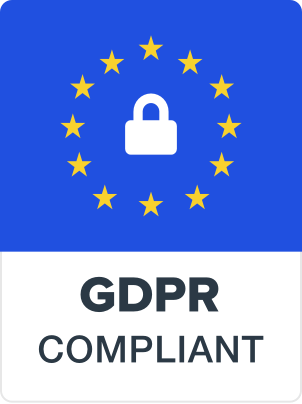ISO Audit: Reason, Types, and Pitfalls

August 2 , 2024
ISO, or International Organization for Standardization (ISO) audits, is a global standard or set of rules for organizations that evaluate their internal, supplier, and external management systems.
ISO Audit covers quality management, environmental management, workplace safety, and information security by assessing, confirming, and certifying processes regarding product and service quality, safety, and security.
An ISO-certified notified body, an independent organization verifies a company’s management systems that meet internationally recognized standards for quality and consistency.
However, getting them approved and certified isn’t easy, as it requires solid audit preparation and profound learning of the ISO standards.
If you are ready to get ISO certified, this blog is for you. Here, we will explore its purpose, why organizations failed to get it, and how to overcome it using an audit app.
Let us first go through its importance and its types.
ISO audit Purpose: What makes them so essential?

Organizations can validate that their system management is well-structured and comply with different recognized standards set by ISO. Here are the reasons that make it essential for businesses of any type to implement ISO audits in their management systems.
- Compliance: Companies can detect non-conformances and identify areas for improvement in real-time. This allows them to take remedial actions to strengthen compliance.
- Risk Management: Companies can access risk management practices to detect potential risks and rectify them before they worsen or negatively impact the operations or processes.
- Quality Assurance: Companies can maintain constant quality in their processes, operations, products, and services. This leads to higher profit and longer client gratification.
- Efficacy: When an auditor evaluates the process deeply, it can detect inefficiencies in the operation, process, and policies and build an opportunity to streamline them for improved productivity.
- Competitive edge: Once an organization is certified to SIO standards, it is now committed to loyalty, security, and quality in all its management systems. Remember, not all companies get this certification, and those who do have a competitive edge in the market.
Types of ISO Audits

There are three types of ISO audits based on who performs them and their purpose.
Internal Audits or First-Party Audits
The business team performs the ISO audit across the organization. The auditors use the ISO audit checklist to detect discrepancies in compliance, explore inefficiencies in operations and processes, and ultimately spot areas for improvement. Internal Audits require in-depth planning and scheduling and must be executed daily.
Here are comes the internal audit ISO standards:
- ISO 9001 for Self-Assessments
- ISO 9001 Internal Audit
- ISO 45001 Audit
- ISO 14001 Self-Assessment
- ISO 14001 Internal Audit
- ISO 22000 Internal Audit (Food Safety)
Supplier Audits or Second-Party Audits
In the supplier audit, a team checks whether the vendors and suppliers are in compliance with your company’s ISO standards. The core motto of this ISO audit is to confirm that the vendor or supplier is delivering the items in alignment with the organizational quality standards.
ISO 9001:2015 Supplier Audit is the supplier audit ISO standards.
ISO Certification Audits or Third-Party Audits
Auditors linked with an ISO certification accreditation organization or by an independent certification body perform the actions of the ISO Certification Audits or Third-Party Audits. The aim of this impartial assessment is to assess the compliance and issue certification.
ISO certification audits have two sides depending on the business objective.
ISO Certification and Recertification (Renewal) Audits: Organizations need ISO certification, for which a certification audit is conducted, which has an expiry date of up to 3 years. After this period, an organization needs to get recertification by repeating the entire ISO audit cycle.
ISO Surveillance Audit: After getting certification, an organization must schedule this audit to verify that it is constantly complying with ISO standards. Third-party auditors evaluate ISO compliance within three years.
ISO Audit Procedure: How are ISO Inspections Performed?
The clear steps of performing ISO compliance hinge on the type of audit a company is doing and what is being evaluated in its management system, such as food safety, production safety, environmental management safety, etc.
Whether it is an internal, supplier, or external ISO audit, a company needs to perform an in-depth assessment of operations and processes to assess compliance and what impact it has by analyzing the steps taken to reduce nom-compliance
Note: When performing internal audits, auditors must display the ISO audit findings with evidence in the form of images to management and advise remedial actions.
You can have automated real-time reporting with UrAudits, the most suitable ISO auditing app, where you can gather audit findings in a digital report and right away, share it with the team members with just a few clicks.
These are some of the ISO compliance audits helpful for you to begin with the ISO audit process:
- ISO 13485 Quality (MDQMS)
- ISO 31000 Risk Management
- ISO 19600 Compliance Management
- ISO 9001-2015 Gap Analysis
- ISO 37301
- ISO 27001
Download URAudits, use our audit templates, and build your own ISO Audit Checklists for each, which you can customize as per your needs.
5 ISO Inspection Errors and ways to evade them with the perfect ISO Audit app

ISO certification is the seal of approval, via registrars from a third-party body, of the company’s adherence to ISO standards compliance and quality in its management system. But getting it isn’t simple; you need to work hard enough to get it.
Most companies make major mistakes when doing ISO inspections and fail to get. So here, we will list those mistakes and help you overcome them.
Overlooking Internal Audits
There is a discussion of experts performed in Elsamer Cove, where it is found that most companies assume internal audit is a waste of time. This mindset stops them from recognizing and rectifying nonconformities before surveillance or ISO certification audits, leading to audit flops.
Therefore, the organization requires a solid strategy for ISO internal audit to detect and tackle issues and on-compliances before ISO certification. However, managing such a solid plan using paper, pencils, and spreadsheets leads to errors and is time-consuming.
So here comes UrAudits, an ISO audit app that helps auditors easily make ISO internal audit plans and improve their ISO audit workflow.
To avoid overlaps, UrAudits takes into account all audit locations and dates, auditor availability, audit types, and audit duration.
Also, Auditors can trace the assignee’s status in real-time to gauge their inspection activity.
So, using the ISO audit app ensures that the organization performs audits daily without draining the minds and resources.
Download UrAudits now and plan your next ISO audit schedule.
No Proper mode of Communications
Poor communication within an organization can create a cascading impact throughout its structure. For example, it becomes hard for an inspector or auditor to communicate with the team regarding conflicts and their resolution if they do not have accurate communication channels. This causes delays and increases interludes, leading to more communication.
But with a digital audit app, a company can improve its communication by establishing a clear mode. For example, an in-depth inspection report can be produced and automatically emailed to selected parties with a few clicks. Also, the company can Receive notifications about task status assigned to each subordinate and monitor them as well.
Managing Multiple Standards

There are multiple ISO standards, and a company needs to manage them all at once. However, managing them simultaneously can create operational challenges, especially when all audits are to be done with a mass of manual actions.
In this regard, an audit application can create, update, and stock a custom ISO audit checklist on a single digital platform.
You can assign each checklist to a particular assignee and access their status using your smartphone or tablet. There are no bulky manuals and no mess.
Unproductive CAPA
Corrective and Preventive Action (CAPA) is more than just a means to address defects or prevent waste. It is a vital element of continuous improvement within an organization.
There can be two ways most companies can execute CAPA inappropriately: failing to gauge the impact of remedial action and having no intention to disclose previous mistakes.
But with a digital audit app, you can tackle both of these pitfalls. Once you execute a remedial action, you can arrange a follow-up audit and compare it to the current audit scores to evaluate the impact of the executed measures.
With UrAudits, you can, free of charge, allot remedial actions and transfer real-time reports to third parties, such as vendors or contractors.
Absence of Evidence of Employee Training
ISO standards can be intricate for staff to learn and follow, which in turn leads to inconsistencies and non-compliance. Also, in ISO standards like ISO 9001, it is mandatory for the auditor to give proof of training regarding worker knowledge of ISO standards.
So, training comes up with dual challenges: Maintaining the record and training the staff.
You can address both of these issues with the audit app.
You can begin by creating a digital SOP checklist to implement ISO standards that your staff can use during the task, thus receiving training on the job.
Also, a senior member needs to e-sign the training documents as proof of completing the training program, UrAudits do that.
As everything occurs on a digital platform and all the data is stored in the cloud, you can easily access and submit the document for every staff member during ISO certification audits.
Conclusion
So, tackle your ISO inspection with UrAudits.
- Automate, streamline, and scale your ISO audit workflow.
- Take a view of all the ISO audit actions with the internal audit dashboard.
- Use a premade audit template for your checklist.
- Receive real-time auditing reporting of all your ISO audit actions and take remedial action.
With digital evidence capture, proof of all staff training is stored.
Copyright © 2024 Uraudits.com. All Rights Reserved. Privacy Policy | Legal | Terms of Use
Privacy Overview
| Cookie | Duration | Description |
|---|---|---|
| cookielawinfo-checbox-analytics | 11 months | This cookie is set by GDPR Cookie Consent plugin. The cookie is used to store the user consent for the cookies in the category "Analytics". |
| cookielawinfo-checbox-functional | 11 months | The cookie is set by GDPR cookie consent to record the user consent for the cookies in the category "Functional". |
| cookielawinfo-checbox-others | 11 months | This cookie is set by GDPR Cookie Consent plugin. The cookie is used to store the user consent for the cookies in the category "Other. |
| cookielawinfo-checkbox-necessary | 11 months | This cookie is set by GDPR Cookie Consent plugin. The cookies is used to store the user consent for the cookies in the category "Necessary". |
| cookielawinfo-checkbox-performance | 11 months | This cookie is set by GDPR Cookie Consent plugin. The cookie is used to store the user consent for the cookies in the category "Performance". |
| viewed_cookie_policy | 11 months | The cookie is set by the GDPR Cookie Consent plugin and is used to store whether or not user has consented to the use of cookies. It does not store any personal data. |









